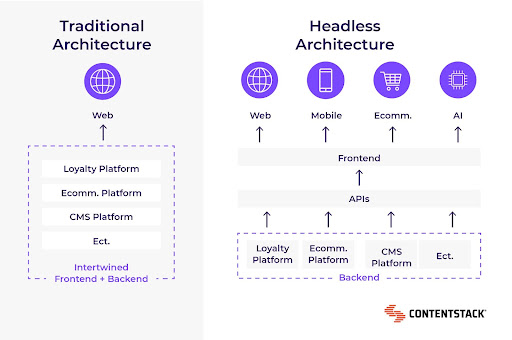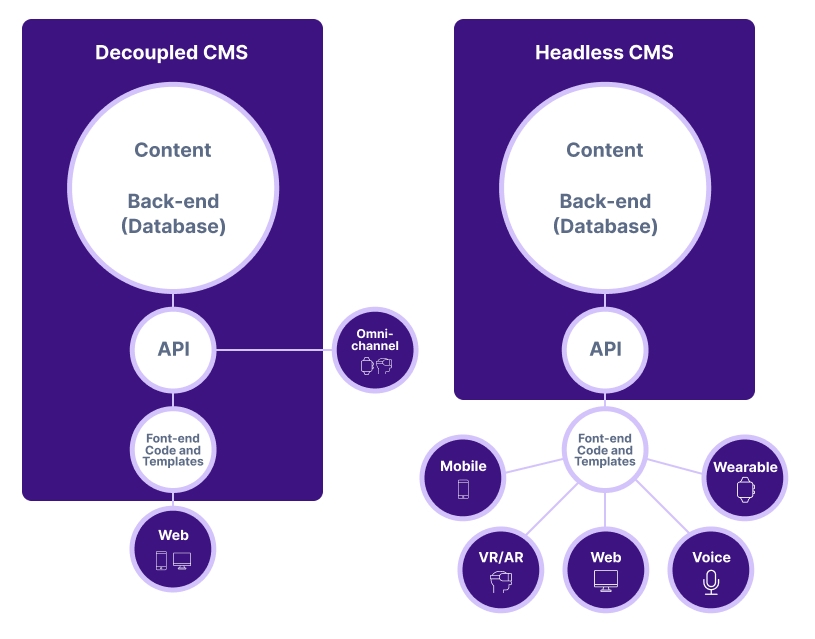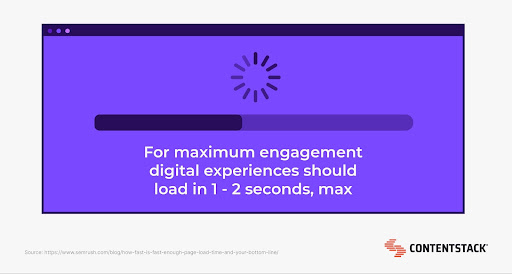Headless CMS and SEO tools: A winning combination
Headless CMS and SEO tools combine to deliver measurable business results. A headless CMS enables efficient content delivery. It also enhances user experience and improves site ranking. That leads to higher engagement and content discovery. For best results, also ensure you follow SEO best practices. See the difference it made for Leesa, with a 30x increase in organic traffic. Ready to transform your online presence? Request a demo today.
Highlights
You’ll learn how to start winning with Headless CMS and SEO tools.
- More flexibility: A headless CMS has no front-end presentation layer. So, it can deliver content to multiple platforms, enhancing engagement and content discovery.
- Better performance: Content delivered via APIs reduces data load and makes your site load faster.
- Scalability: A headless CMS allows you to customize user experiences without disrupting workflow.
- Improved SEO: A headless CMS offers structured data support and customizable URLs, which are SEO-friendly features that boost a site's search ranking.
- Proven success: For instance, Leesa saw their page load time drop from 6 seconds to less than 1 second. Their organic traffic from blogs also improved by 30x.
Ready to enhance your SEO strategy? Request ademo now.
Keep reading to learn more!
There are over 1 billion active websites worldwide, while Google processes around 3.5 billion daily searches. Quite clearly, the digital space is competitive. Yet, businesses must find ways to cut through these barriers and reach their audience. One of the most efficient ways to do that is by combining a headless CMS and SEO tools.
This guide takes you through the concept of headless CMSes and SEO tools, their advantages, and best practices for jumpstarting your digital marketing and SEO strategy.
Understanding headless CMS
In CMS terms, ‘head’ refers to the front end. So, a headless CMS is a content management system without a head or front end. It only has a back end, making it front-end agnostic. So, what does that mean? It means that headless CMSes are not tied to any front-end application. You can integrate it with any front-end framework.
As stated, the head is the front-end presentation layer, the part of the website that users can see. The body is the back end or content hub; it is where you store, organize and create content. Since a headless CMS has no front end, you can publish content to multiple platforms with barely any restrictions. Things are quite different when using a conventional CMS, which requires specific templates, themes, and plugins.
Since the headless CMS architecture separates the back end and front end, APIs play a critical role. They are the final piece of the jigsaw, connecting both components of the system. Through API calls, you can retrieve content from the back end and publish it on the front-end application.
So, how does a headless CMS impact SEO? Since it has no front-end presentation layer, it increases flexibility. That way, you can deliver content to multiple platforms. That results in higher engagements and more content discovery. Aside from that, it encourages better collaboration because each team can focus on their part of the system without disrupting workflow.
Also, headless CMS platforms offer apps, integrations, and features like structured data support and customizable URLs that enhance SEO. These features improve user experiences and help sites rank higher on search engines.
Comparison of headless CMS vs. traditional CMS for SEO
The front end and back end work as one unit in a traditional CMS, while a headless CMS separates them. Headless CMSes are excellent for content modeling, allowing you to display content in the proper format for each platform. However, conventional CMSes struggle with this. They are typically only suitable for publishing content on websites.
With a headless CMS, content creators work with structured data and control the content hub. That helps them tailor content to the needs of the audience. Also, they can focus on their work without interfering with development work on the front end. A traditional CMS is not as flexible and does not offer similar control. You can only work with specific frameworks, themes and templates.
Their integration capabilities also differ. For instance, while a headless CMS can integrate with any analytics tools, CRM, Marteck, and marketing automation stacks, a traditional CMS cannot. Headless CMSes allow you to customize and integrate with almost no limits.
Finally, headless CMSes do not control how your content is rendered, while traditional CMSes are closely integrated with your domain and control how content is rendered. Hence, traditional CMSes perform well when adding page titles, descriptions, and meta tags; however, when it comes to distributing content to multiple platforms like IoT devices, wearables, and omni-channels, traditional CMSes struggle.

What is a decoupled CMS?
The term ‘decoupled’ often comes up when discussing headless CMSes. Though people often interchange the words ‘headless’ and ‘decoupled,’ they differ in practice.
A decoupled content management system is a CMS that separates the presentation layer (front end) from the administration layer (back end). You have probably heard the same thing about headless CMSes, but they are different.
How do they differ? A headless CMS does not come with a front-end presentation layer or head, and that makes it completely headless.
But that’s not all. While a headless CMS does not interfere with how your content is displayed, a decoupled CMS prepares your content for presentation and pushes it to your application's delivery environment.

Advantages of headless CMS for SEO optimization
Speed and performance benefits
A headless CMS delivers content via APIs, reducing the quantity of data that needs to be loaded. As a result, your page loads faster. Although it is not a direct ranking factor, load speed improves page experience, which impacts your SEO.

Improves organic traffic
As stated, headless CMSes help your website load faster. It also enhances your content delivery to various channels. By optimizing and delivering your content to all digital channels, a headless CMS also increases your visibility in search engine results pages (SERPs). These factors make your content more discoverable and increase your organic traffic.
Better content delivery and discovery
A headless CMS delivers content across various devices and platforms, including websites, mobile apps, IoT devices and many more. It also supports multichannel and omnichannel content delivery, ensuring that content is optimized and discoverable, irrespective of your audience's device.
Flexible and scalable
Headless CMSes are flexible, allowing you to customize your user experience. As content creators focus on creating and organizing content, developers can build lightweight apps for the front end using any programming language. Aside from that, a headless CMS can scale content management so that when your customer needs change, you can respond without disrupting the workflow.
SEO best practices for headless CMS
Keyword research
Keyword research is the practice of finding the search terms users enter into a search engine when looking for information, products or services. Keyword research is central to SEO because it helps you tailor content to align with your audience's search intent. So, use relevant keyword research tools to identify rankable keyword ideas. That is keywords with high search volume and low competition. Then, get your content creators to naturally incorporate those keywords into your content to ensure it is relevant to search queries and aligns with Google’s helpful content requirement.
Technical optimization
Technical optimization refers to website and server optimization that ensures search engine spiders can crawl and index your website without issues. It impacts your search engine rankings directly and is critical when using a headless CMS. Your technical optimization should focus on correctly fixing broken links and HTTP status codes, creating a sitemap and ensuring your website has readable URLs. That makes it easy for search engines to crawl and index your website.
Mobile optimization
Currently, 57% of global web traffic originates from mobile devices. Hence, it is critical to optimize your website for mobile devices. Mobile optimization improves your website’s load speed and user experience. It also impacts on conversion rate. Google currently prioritizes the mobile version of websites. So, it is vital that you optimize your website for mobile devices.
Title tags, meta-descriptions, and internal links
While title tags name your website and tell people and search engines what it is, meta descriptions summarize your content to let them know what it is about. They are critical to SEO optimization because they help visitors and search engines understand your content. Optimize your meta descriptions. Also, do the same for your title tags by including relevant keywords. Then, use internal links to make it easy for visitors to navigate your website.
Link building
While internal links help visitors navigate your website, links that point to your website act as confidence votes. They signal to Google that you have valuable content. So, the more people link to your website, the better for your SEO. To build links, create high-quality and valuable content that people can refer to or link to. There are also other link-building strategies, like email outreach, guest posting and podcasting.
Success stories: Headless CMS and SEO
Many organizations are increasing their organic search numbers by using headless CMS for SEO-optimized websites. Here are some success stories.
Leesa
Leesa struggled with an inefficient workflow that affected SEO. Using Shopify, their content creators write the content and pass it to the developers for publishing. The developers then write codes and push them to a . JS file. So, instead of focusing on SEO Optimization, developers were dealing with multiple content requests.
They wanted organic growth, but their workflow did not support that. The system was also error-prone, and organic traffic to the website was below their expectations. They needed changes.
Richard Bilton, Director of Technology, said this about their old system. “It wasn’t convenient. We wanted to work with Shopify, but we needed the freedom to produce our own content the way we wanted, and to speed up the website and gain flexibility.”
Contentstack worked with Leesa to build a new headless architecture and integrated it with Shopify. That improved the website and SEO readiness. Page load time dropped to 1 second from 6 seconds. Their organic traffic from blog articles also increased by 30 times.
After implementing Contentstack's headless CMS, Bilton had this to say. “Contentstack has been fantastic. I don’t know of any other customer support team willing to jump on a video call and code with us and help us fix a challenge. In my world, it’s never happened before.”
Read more about Leesa’s success story with headless CMS and SEO.
Waltz Health
Waltz Health needed a more efficient way to provide information about prescriptions and pricing to their customers. They wanted to enable users to create templates for product data, pricing and branded assets, whether they were technical or non-technical users.
Waltz Health chose Contentstack's headless CMS and Marketplace to deliver the changes. They created responsive portals that provided patients with intuitive search experiences, enabling them to discover information and prices with ease. They also launched Marketplace, implementing their search portal within 75 days.
The switch to headless CMS enabled them to create customized sites on demand and enable integrations with third-party solutions.
Hear from Sunil Kripalani, Chief Technology Officer.
"The flexibility that’s baked into Contentstack isn’t just enabling our staff to work more efficiently, it’s a true business enabler that’s helping us consider new service offerings. Using APIs, we can pull in new data streams and create unique experiences for our provider partners, as well as within niche markets."
Learn more about how Waltz Health powered its proprietary pharmaceutical marketplace with Contentstack.
FAQ section
Can a headless CMS support my SEO efforts?
Yes. A headless CMS gives you control over where and how you publish your content, ensuring you can optimize it for relevance. Aside from that, it promotes multi-channel and omnichannel content delivery, which increases your content discovery. Also, headless CMSes do not come with a dedicated front-end presentation framework. Hence, developers can build lightweight applications for the front end. That increases your website load speed and SEO optimization.
What are the key differences between a headless CMS and a traditional CMS when it comes to SEO?
Headless CMSes offer more flexibility that allows you to benefit from omnichannel content delivery. Since it delivers content via APIs, it makes your website load faster, which enhances site positioning and SEO readiness. It gives developers the flexibility to build lightweight applications for the front end. A traditional CMS does not offer such flexibility. Instead, it comes with templates and plugins, some of which could reduce load speed and your website responsiveness.
Are there free SEO tools that can be used with a headless CMS?
Yes. Some examples of free SEO tools are Google Trends, Google Search Console, Keyword Planner, Yoast SEO, AnswerThePublic, Etc.
Can a headless CMS help improve my website's organic traffic?
Yes. Headless CMSes pushes your content to multiple platforms. That improves content discovery as more people can find it. That improves site positioning. As your site positioning improves, it’s easier for search engines to find your content, which drives traffic to your website.
How can I optimize my content for SEO using a headless CMS?
The best way to do that is to follow SEO best practices for headless CMS. For instance, start with technical optimization. Create a site map and implement structured data markup. Without technical optimization, it will be difficult to find your content as the search engines will not crawl and index it. Also, optimize your website for mobile devices. Aside from that, research keywords to find relevant search terms for content creation. Also, remember that your audience is humans. So, create helpful content that answers their questions. Finally, optimize your title tags and meta-descriptions. That makes it easy for people to understand your content.
Learn more
Headless CMS and SEO tools have proven to be a winning formula. It improves workflow and increases site load speed. It also increases organic traffic to your website. Leesa’s partnership with Contentstack points to that.
So, if you're prepared to jumpstart your SEO strategy, take the first step and request a demo to see how it can benefit your organization.
